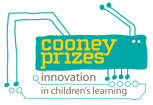Community Embraces New Word Game at Mid-Year Play Day This past Sunday, families at Takoma Park’s Seventh Annual Mid-Year Play Day had the opportunity to experience OtherWordly for the first time. Our educational language game drew curious children and parents to our table throughout the afternoon. Words in Space Several children gathered around our iPads […]
Read moreAuthor: IDEA
 The National STEM Video Game Challenge, awarded the $50k grand prize last week to a professional team that did not meet the eligibility criteria.
The National STEM Video Game Challenge, awarded the $50k grand prize last week to a professional team that did not meet the eligibility criteria.
This story came to my attention last week, when I wrote a blog post about a cool online science game for Middle School kids which won the grand prize as part of the contest run by the Joan Ganz Cooney Center at Sesame Workshop (the parent organization of Sesame Street) and E-Line Media. That article briefly mentioned anomalies in the contest, and the Cooney Center sent me an email: “Please take this article down as soon as possible because of a legal issue that is pending.” This made me wonder, is there a scandal on Sesame Street?
 “This is your target” the game says, pointing at an ordinary looking cartoon woman in a T-shirt and track pants. “If you pay close attention to the host’s weaknesses, you can make a disease that will get the host super duper sick!” (more…)
“This is your target” the game says, pointing at an ordinary looking cartoon woman in a T-shirt and track pants. “If you pay close attention to the host’s weaknesses, you can make a disease that will get the host super duper sick!” (more…)
 Here’s a snapshot of the current exhibitions or activities being featured at a sampling of U.S. science centers, and their ticket prices for adults. (more…)
Here’s a snapshot of the current exhibitions or activities being featured at a sampling of U.S. science centers, and their ticket prices for adults. (more…)
 Open access means that readers have free access. But who pays for the operational costs of running a publication? Often it’s the authors, though there are several common business models.
Open access means that readers have free access. But who pays for the operational costs of running a publication? Often it’s the authors, though there are several common business models.
How much are authors paying? What do they think about it? And what are some other business models to sustain journals and other kinds of digital content? (more…)
 Open access journals are transforming how researchers share information, and how the public can access it. They are peer reviewed journals which are digital, online, free of charge, and free of most copyright and licensing restrictions.
Open access journals are transforming how researchers share information, and how the public can access it. They are peer reviewed journals which are digital, online, free of charge, and free of most copyright and licensing restrictions.
Open access journals are now commonplace. As of last lear, nearly 10% of scholarly articles were published in open access journals. There are now currently over 7500 open access journals, according to the Directory of Open Access Journals (DOAJ), which indexes freely available, peer-reviewed journals that don’t have an embargo period (see criteria). (more…)
The following were the twenty most visited art exhibitions of 2010: (more…)
 What’s the difference between a science museum and a science center? To insiders, the difference is the extent a museum is based on a collection of objects vs. experiences they create for visitors.
What’s the difference between a science museum and a science center? To insiders, the difference is the extent a museum is based on a collection of objects vs. experiences they create for visitors.
To the public, it’s largely immaterial. (more…)


 Museums and archives manage information about their collections, facilitate interdepartmental communication, and make collections available to the public using collection management software. Here’s a rundown of the collection management systems being
Museums and archives manage information about their collections, facilitate interdepartmental communication, and make collections available to the public using collection management software. Here’s a rundown of the collection management systems being  Drones, spy robots, Mach 6 warplanes, new energy sources, and climate monitoring are just a few of the new technologies being developed by the U.S. military to fight the wars of the future. These technologies depend on cutting edge scientific knowledge, and are fantastic ways to get the military-oriented public (nearly
Drones, spy robots, Mach 6 warplanes, new energy sources, and climate monitoring are just a few of the new technologies being developed by the U.S. military to fight the wars of the future. These technologies depend on cutting edge scientific knowledge, and are fantastic ways to get the military-oriented public (nearly  Today,
Today,